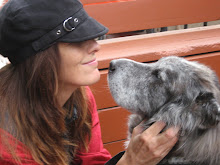




We visited a beautiful area called Gendarmenmarkt, a plaza that holds two cathedrals--a German one and a French one. In the center, an old theater now functions as a concert hall. A wonderul saxophonist played his melancholy songs in the center, the notes sending a calmness out across the plaza. In no way could I imagine the devasting scene here from WWII. The churches and theater were left as rubble.
The Holocaust memorial is near the famous Brandenberg Gate. This memorial was built by an American architect Peter Eisman. His design broke all rules. He built a grid of 2,711 gray, concrete varying in height. The memorial can be walked through from all sides, and without its use of symbolism, it leaves guests to find their way in and out, and to discover their own feelings about this space. Some people walked through this maze-like memorial in silence. Others zipped in and out of the blocks in a playful way. I'm not sure how it made me feel. I definitely could embrace the sense of loss, yet I also was able to see how this part of Europe's past--this part of all of our history-is still present, still a part of the essence of who we all are. The museum below the memorial is overpowering. The Room of Dimensions displays projections of quotations from Jewish prisoners, along with the actual copy of the letter it was taken from. The Room of Familes showed projections of an entire family and how details of how they were affected in the war. With most outcomes being the worst. The Room of Places highlighted the effects of death and torture across the Europe. The energy of life drains from you. Documentation of the unimaginable is completely overwhelming.
But as I moved along the the city, the markers between what was once west and east Berlin are everywhere. A wandering memorial along the road itself marks where the Berlin Wall once stood, and it is astounding to step one foot on and off. How could such a divider separate a city and its people? In 1961, in two days, the Wall was built, separating families, serparating lives. Closing off people and their ideas. There is a memorial at the Checkpoint Charlie. The infamous border crossing on the corner of Friedrichtrasse. This checkpoint seperated the US and Soviet sectors, and in October 1961, the tanks of both countries threatened each other head on for 3 days. The East German government no longer wanted the US military traveling to the East without papers being checked. Finally, Soviets retreated in October of that same year--saving us further destruction from war. This checkpoint was one of 8 crossings between the two parts of the city.
With years of hopes for unification, the Wall came down in 1989, piece by piece, opening up this city again to its people as a whole. One section of wall remains near to where the old Gestapo center had been. Gazing up at this massive piece of the Wall, it is still almost impossible to imagine how it could have encompassed an entire city. Impossible to imagine the lack of freedom and justice.
During the Cold War, all hope was not lost. An art community arose in an area called Tochales. Art withstood injustice and seperation, and expression allowed hope to live on. The building is still a vibrant art center in Berlin, and the building, although modernized with present-day life, still remains the same. Art is hope and healing.
I am overjoyed to see the amazing city that Berlin is now. The sadness of witnessing the history of WWII, and the Cold War here will haunt me forever, but I leave with a hope and a love for this remarkable place. Thank you to my wonderful guides, Joe and Christiana!
With hope, and a greater understanding of PEACE,
Lori


2 comments:
Wow how wonderful your adventure has been. I can't wait to read you picture book of the Bad Beekeeper. The sites sound wonderful and the food sounds divine. I would have loved to have been at the flea market with you.
Thinking of you,
Y
How insightful, Lori. You absolutely have a talented craft. Gendarmenmarkt will be lighted up for Christmas when we see it; it'll be an interesting experience to step into the past, yet, celebrate the present.
Post a Comment